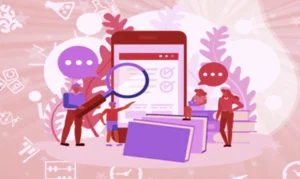Digital inequality – often called the digital divide – means people differ in access to and ability to use technology. It is not just about having an internet connection; it also involves device quality, digital skills, and affordable service.
In 2025, these gaps are still huge. For example, over 90% of people in rich countries use the internet, but only about 25% do in poor countries.
Globally, roughly 2.6 billion people (32% of the world) remain offline, with 1.8 billion of them in rural areas. Women are less connected too: 70% of men use the internet globally versus 65% of women, leaving 244 million more men than women online.
In this context, digital inequality contributes directly to an education gap and slows economic growth. Bridging the digital divide is essential to unlock education for all and sustain economic growth.

Understanding Digital Inequality
Digital inequality, often called the “digital divide,” refers to the gap between those who have access to affordable, reliable internet and digital tools and those who do not. This divide is shaped by socioeconomic status, geography, age, and education level.
People without reliable internet or digital literacy struggle with online learning, job opportunities, and essential services.
During the COVID-19 pandemic, digital inequality became more pronounced, highlighting disparities in remote work and education.
As technology becomes central to daily life, this divide is a major barrier to equitable education and sustainable economic development.
Bridging this gap requires affordable internet, accessible devices, and digital education programs. Governments, businesses, and nonprofits play a crucial role in ensuring equal digital opportunities.
Closing the digital divide fosters economic growth, innovation, and social inclusion, making technology accessible to all. Addressing this issue is vital for a fair and connected society.
In this article, we’ll discuss in detail how digital inequality impacts education and economic growth. We’ll also offer effective solutions to bridge the digital divide. Read on!
The Impact of Digital Inequality on Education and Economic Growth in 2025
Digital inequality remains a critical barrier to both educational equity and economic growth worldwide.
As of 2025, an estimated 2.6 billion people remain offline, with only 27 percent of individuals in low-income countries having internet access compared to 93 percent in high-income nations.
Two-thirds of school-aged children lack reliable home internet, hindering their ability to learn and exacerbating achievement gaps.
Economies also suffer: micro-firms investing in digital solutions doubled from 10 percent to 20 percent between 2020 and 2022, yet large firms surged from 20 percent to 60 percent, amplifying productivity divides. In Africa, broadband access rose from 26 percent in 2019 to 36 percent in 2022, yet this still leaves millions offline.
The issue became especially evident during the COVID-19 pandemic, when millions struggled with remote learning and work due to limited access to technology.
Policymakers and organizations—from UNESCO’s digital education initiatives to the EDISON Alliance’s goal of including 1 billion more people—are launching strategies to bridge the gap.
Without concerted action, digital inequality will continue to impede learning outcomes, widen economic disparities, and limit global growth.
The Effects of Digital Inequality on Education and the Digital Learning Gap
Access to technology strongly shapes learning today, but many students lack it. About 2.2 billion children and young people under 25 – roughly two-thirds – have no internet at home.
The problem is stark in poor regions: only 6% of youth in low-income countries have home internet, versus 87% in high-income countries.
UNESCO estimates ~37% of students worldwide still lack reliable internet. This leaves poor and rural students behind.
During COVID-19, for instance, remote learning reached over 1 billion students but failed to reach at least 500 million (31%), including 72% of the poorest children.
In practice, just half of lower-secondary schools worldwide have internet access for teaching. UNESCO reports only ~40% of primary and 50% of lower-secondary schools were connected in 2022. Where schools lack connectivity, students cannot benefit from online resources.
In classrooms with tech, students often fare better, but evidence shows technology alone is not a cure-all. For example, a World Bank study found distributing laptops without supporting changes in teaching did not improve learning in Peru.
But targeted digital interventions can help: in China, high-quality lesson recordings given to 100 million rural students raised their test scores by 32% and narrowed the urban–rural learning gap by 38%.
In Mexico, televised lessons plus in-class support boosted secondary school enrollment by 21%. These successes show digital tools can aid education, but only where connectivity and support are in place.
Persistent gaps in school access mirror student outcomes. Children from poorer, rural, or marginalized families are less likely to have internet or devices.
In one study, only 5% of children in West and Central Africa had the internet at home – far below the 33% global average.
Lacking broadband and hardware, disadvantaged students “are typically denied the opportunity” to benefit from educational technology.
UNESCO warns that without addressing these divides, the “learning gap” will widen: students without connectivity fall further behind their peers.
The Impact of Digital Inequality on Labor Markets, Digital Skills, and Productivity
Digital inequality also affects jobs and growth. Widespread internet and broadband raise productivity and output.
World Bank research finds that each 10% increase in broadband penetration tends to boost GDP by about 0.25%.
Households with broadband have better economic outcomes: one study showed broadband users were 8.1% more likely to be employed and earned on average USD 2,202 more per year than non-users.
But many workers lack needed digital skills. In the U.S., 92% of jobs now require some digital skills, yet one-third of workers report low or no foundational digital abilities.
A similar pattern appears in Europe and other regions. In OECD countries, about 30% of Americans and 42% of Europeans lack even basic digital skills.
Young people are more digitally savvy than older adults: for example, 70% of Europeans aged 16–24 have basic digital skills versus only 40% of those 55–64.
Digital skill gaps align with education levels: in Europe, 81% of highly educated adults have basic digital skills, but just 29% of low-educated adults do.
These skill gaps hamper labor markets. Employers struggle to fill tech and ICT jobs. In Europe, the share of firms with hard-to-fill ICT vacancies roughly doubled over the last decade due to a lack of qualified applicants.
Small businesses, in particular, lag behind larger firms in adopting new technologies (cloud, AI, IoT), which limits innovation and productivity growth. At the same time, jobs in virtually all sectors now demand digital skills – not just tech firms.
Workers lacking internet access or digital know-how miss out on career opportunities. OECD notes that without digital skills, many people “have limited employment prospects and cannot fully engage in society”.
In short, the digital divide translates into an education gap and a skills gap, both of which dampen economic growth and widen inequality.
The Digital Divide: Global and Regional Disparities
The digital divide varies widely by region and community. In Africa, it is most severe: roughly 40% of men and 30% of women use the internet.
Worldwide, an estimated 90% of people in low-income countries still lack internet access. By contrast, some developed nations have near-universal connectivity (over 90%).
Urban areas generally have much higher connectivity than rural ones. For example, UNESCO reports that 1.8 billion people living in rural areas have no internet.
Disparities also run along social lines. Across countries, the richest and best-educated gain the most: in low-income countries only 27% of people have the internet, compared to 93% in high-income countries.
Within countries, children from wealthy households are far more likely to have home internet (58%) than those from the poorest households (16%), a gap that mirrors school resources.
Women and girls fall behind men globally. Vulnerable groups – such as people with disabilities, ethnic minorities, and those in conflict zones – often face multiple obstacles to digital inclusion.
This uneven access means some regions advance faster. World Bank data show countries with stronger digital infrastructure have made 40% more progress on the Sustainable Development Goals than their peers.
Without urgent action, developing regions risk being left further behind: bridging the digital gap is now seen as a fundamental driver of economic equality and social inclusion.
Key Studies and Evidence (2023–2025)
Recent reports by global organizations highlight the scale of the challenge. The 2023 UNESCO Global Education Monitoring Report on Technology in Education notes that ICT adoption is uneven and cautions that the most disadvantaged are often “denied the opportunity” to benefit from digital learning.
ITU’s 2023 fact sheet shows the persistent gender divide in internet use. OECD studies emphasize that basic digital skills are now essential and outline how digital divides are linked to age, education and income.
The World Bank’s 2024 digital economy report points out that expanding broadband lifts GDP and that digital infrastructure helps countries advance on development goals.
A 2023 analysis by UNICEF and ITU reveals that two-thirds of young people globally lack home internet and that connectivity is especially scarce among the poorest households.
These and other reports paint a clear picture: as digital technology reshapes work and learning, gaps in access and skills translate into gaps in education, jobs and growth.
Real-World Examples and Case Studies
- Uruguay (Plan Ceibal): This pioneering program provided a laptop and internet access to every public school student and teacher. It significantly closed Uruguay’s digital divide and transformed teaching methods.
- China: Beyond rural lesson recordings (above), China has invested heavily in broadband and 5G infrastructure. A randomized study found that Chinese villages with better digital access saw incomes rise and rural-urban earning gaps shrink.
- Mexico: During lockdowns, Mexico combined televised lessons with teacher support to reach students. Secondary school enrollment jumped 21% in areas served by the program.
- Democratic Republic of the Congo (DRC): Faced with low connectivity, DRC used radio, TV and offline digital content to continue schooling in crises. It even piloted “virtual tutors” – AI-driven math coaches – which helped 10,000 students improve their grades.
- Namibia: In a low-resource school, teachers used one computer and projector to create and share digital lessons. They reported that even this simple setup improved student engagement and brought new content into the classroom.
- India: The government’s BharatNet program is wiring rural villages with broadband and has launched “Digital Saksharta” (literacy) programs. By 2024, over 63 million rural citizens were trained in basic digital skills through PMGDISHA. These efforts aim to ensure even remote communities get connectivity and know-how.
Each case shows one piece of the puzzle: high-level infrastructure, supportive teaching, and creative low-tech solutions. They underline that with concerted effort, the education gap from digital inequality can be narrowed.
Initiatives, Policies and Partnerships Addressing the Divide
Many strategies are underway to bridge digital gaps. Governments, NGOs and businesses are investing in infrastructure and skills:
- Broadband Expansion: UNESCO and others urge public-private partnerships (PPPs) to speed rural broadband deployment. The World Bank reports that from 2007–22, regional broadband projects brought the internet to 112 million people in poorer countries. National plans like India’s BharatNet (updated in 2025) and the new National Broadband Mission aim to bring high-speed internet to every village.
- School and Community Connectivity: UNICEF/ITU’s Giga initiative is mapping schools and connecting them to the internet worldwide. Many countries have schemes to wire schools or provide low-cost Wi-Fi. Community networks (local hubs or mesh systems) are also growing in underserved areas (supported by UNESCO and NGOs).
- Affordable Access: Some programs subsidize connectivity and devices. For example, several governments support free or reduced-cost internet for low-income families. UNESCO recommends recycling or donating used devices and offering tax incentives for companies that provide broadband to employees or donate tech.
- Digital Literacy and Education: Integrating digital skills into curricula is a priority. UNESCO and partners have developed ICT competency frameworks for teachers and AI literacy standards. India’s PMGDISHA program trained 63.9 million rural adults in basic digital skills. Community centers, libraries and NGOs worldwide now offer free digital literacy workshops.
- Public-Private Partnerships: Industry has joined in. Nonprofit and corporate initiatives like SpaceX’s Starlink satellite internet and Google’s “Next Billion Users” plan aim to reach remote users. Telecom companies in Africa often run programs to connect schools or clinics. The World Economic Forum and others advocate cross-sector alliances to fund infrastructure and training.
- Policy Frameworks: At the multilateral level, the UN Digital Compact (adopted by many countries) explicitly focuses on “bridging digital divides” and promoting affordable, inclusive access. Regional bodies (EU, ASEAN, African Union) have digital strategies tying connectivity to economic development.
These initiatives show that tackling digital inequality is on the global agenda. They address various aspects – from cables and towers to classrooms and curricula – and recognize that collaboration is needed.
Read Here: The Impact of Government Policies on Income Inequality
Recommendations for Policymakers, Educators, and Businesses
To close the digital gap, experts offer clear, actionable steps. These recommendations complement the initiatives above:
- Expand Infrastructure (Policymakers): Invest in rural and low-income connectivity through PPPs and innovative financing. Remove regulatory bottlenecks and encourage sharing of infrastructure (towers, fiber).
- Ensure Affordable Access (Policymakers & Industry): Subsidize the internet for low-income families, and provide affordable devices. Support programs to recycle and redistribute computers to schools and communities. Encourage companies to cover some employee internet costs and to donate tech.
- Integrate Digital Skills into Education (Educators & Policymakers): Embed digital literacy and coding in school curricula from an early age. Train teachers in using technology for teaching. Fund community training programs (libraries, NGOs) to teach all ages.
- Promote Inclusive Content and Governance (Educators & Tech Companies): Develop locally relevant digital content in native languages. Apply accessibility standards so people with disabilities or low literacy can use digital tools. Teach students about online safety, data rights, and critical thinking.
- Foster Cross-Sector Collaboration (All): Align digital inclusion strategies across government, business and civil society. Leverage private innovations (like satellite internet) alongside public projects. For instance, governments can partner with tech firms to scale proven pilot projects.
- Address Socioeconomic Barriers: Link digital programs with poverty alleviation. Target interventions at groups left behind – women, rural dwellers, minorities – through scholarships, mobile training units, or community networks.
- Measure Meaningful Participation: Track not just access, but usage and skills. Set metrics for device ownership and digital proficiency, and disaggregate data by gender, income and region to ensure no one is overlooked.
Read Here: Income Inequality and Its Impact on Social Mobility
Conclusion
Digital inequality poses a dual threat: limiting educational opportunities for millions of students and stifling economic growth by excluding businesses and workers from the digital economy. In 2025, despite progress in infrastructure and global initiatives, a significant portion of the world remains disconnected or under-equipped.
Globally, 2.6 billion people remain offline, equating to one-third of humanity excluded from the digital economy and modern learning environments.
In high-income countries, 93 percent of the population can access the internet, while in low-income countries that figure drops to just 27 percent.
Closing this digital divide requires sustained investment in connectivity, affordable devices, and digital skills training. By prioritizing equitable access, policymakers and stakeholders can unlock the full potential of the digital age, ensuring that education systems are inclusive and economies thrive globally.
For educators, the charge is to make technology a tool for learning rather than a distraction. Instructional design should integrate digital tools in support of pedagogy (not just replace blackboards with screens). Teacher training should emphasize blended learning and how to include learners with limited tech.
For businesses, investing in employee upskilling and infrastructure pays off. Firms should train staff in necessary digital skills and work with governments on connectivity projects. They can also adopt flexible work policies that assume remote access, helping illustrate the value of connectivity.
Read Also: The Impact of Social Class on Educational Attainment
Author: Mahtab Alam Quddusi – A Postgraduate in Sociology, India.





